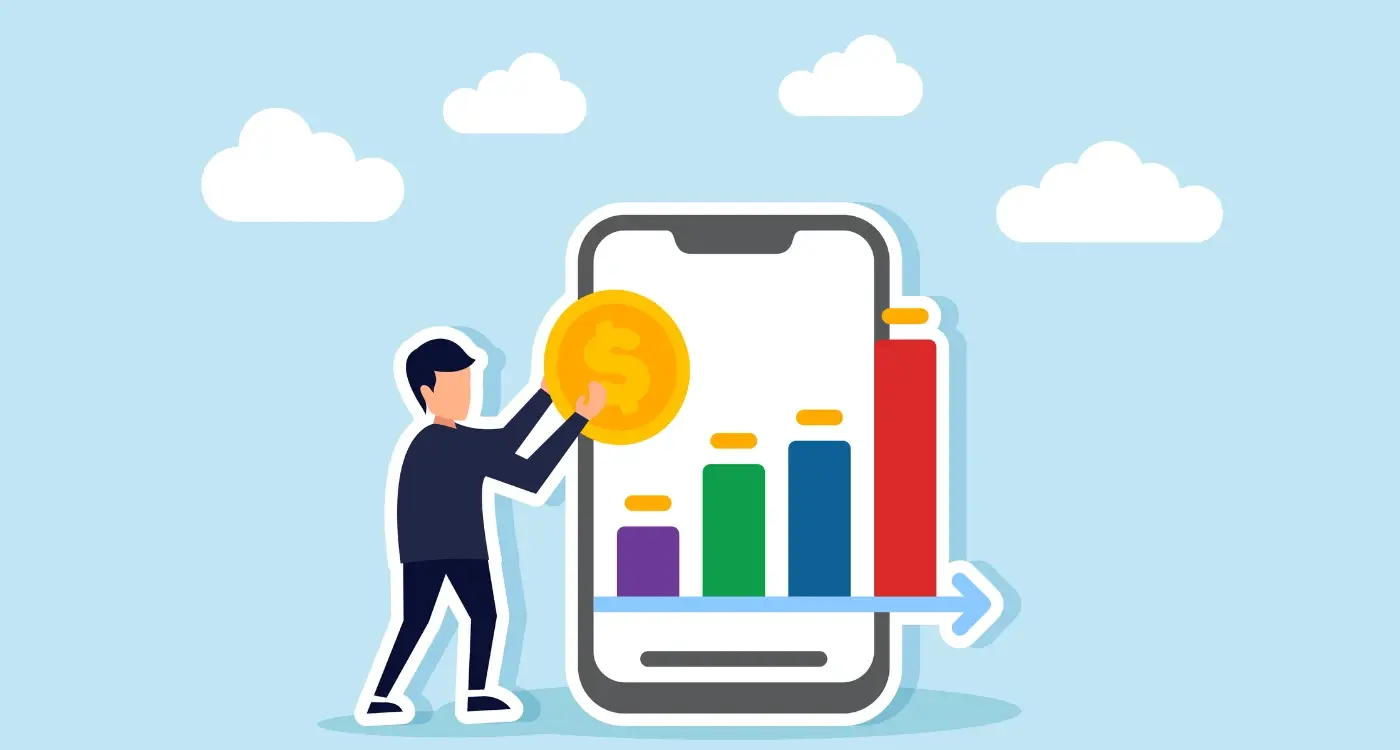How Do Mobile Apps Compare To Other Marketing Channels?
Did you know that the average person checks their phone 96 times per day? That's once every 10 minutes during waking hours. This simple fact reveals something profound about how we consume information and make purchasing decisions today—and it's completely reshaping how businesses think about reaching their customers.
For decades, companies have relied on traditional marketing channels like TV adverts, radio spots, and newspaper ads to grab attention. Then came the digital revolution with social media, email campaigns, and Google ads. But now there's a new player in town that's quietly becoming one of the most powerful marketing tools available: mobile apps.
The question isn't whether mobile apps work as a marketing channel—it's whether you can afford to ignore them whilst your competitors embrace them
This guide will break down exactly how mobile apps stack up against other marketing methods. We'll look at everything from customer acquisition costs to long-term retention rates, comparing apps with both traditional and digital marketing channels. You'll discover why some businesses are shifting significant portions of their marketing budgets towards app development—and whether this approach makes sense for your company too.
What Are Marketing Channels and Why Do They Matter?
Marketing channels are simply the different ways businesses reach their customers—think of them as the paths between you and the people you want to sell to. Some channels have been around for decades (like newspaper adverts and radio spots), whilst others are relatively new players in the game. Each channel has its own strengths, weaknesses, and quirks that make it better suited for certain types of businesses or goals.
The Building Blocks of Customer Connection
Every marketing channel works differently and attracts different types of people. Television reaches millions but costs a fortune; social media can be cheap but requires constant attention and creativity. Email marketing might seem old-fashioned, but it still delivers excellent results for many businesses—particularly when you've got a loyal customer base who actually want to hear from you.
Why Your Choice of Channel Matters More Than Ever
Here's the thing I've learned after years in this business: choosing the wrong marketing channel can be an expensive mistake. You might spend thousands on Facebook ads only to discover your target audience prefers Instagram, or invest heavily in print advertising when your customers have moved entirely online. The key is understanding where your customers spend their time and how they prefer to receive information. That's why comparing different marketing channels—including mobile apps—is so important for making smart business decisions.
Traditional Marketing Channels—Print, Radio, TV and Direct Mail
Let's talk about the old school methods that have been around for decades. These traditional marketing channels built entire industries and made countless brands household names. Print advertising in newspapers and magazines, radio spots, television commercials, and direct mail campaigns—they're still being used today because they work. Well, sort of.
The thing is, these channels operate on what I call the spray and pray method. You put your message out there and hope the right people see it at the right time. A television advert during prime time might reach millions of viewers, but how many of those people actually need your product right now? Radio adverts play to commuters stuck in traffic, but there's no guarantee they'll remember your brand when they get home.
The Numbers Game
Traditional channels excel at building brand awareness through sheer volume. You can't measure direct engagement the way you can with digital methods—there's no click-through rate for a newspaper advert or a way to track how many people picked up the phone immediately after hearing your radio spot.
| Channel | Best For | Main Limitation |
|---|---|---|
| Television | Mass brand awareness | Expensive, hard to target |
| Radio | Local reach, frequency | Audio only, brief exposure |
| Detailed information | Declining readership | |
| Direct Mail | Targeted geography | Often seen as junk mail |
Traditional marketing works best when combined with digital follow-up. Use TV or radio to create awareness, then capture interested customers through your website or app where you can track their behaviour properly.
The biggest challenge with traditional marketing is the one-way conversation. You broadcast your message and that's it—no immediate feedback, no way to adjust your approach mid-campaign, and no detailed data about who responded and why.
Digital Marketing Channels—Social Media, Email and Search Engine Marketing
Digital marketing has completely changed how businesses talk to their customers. Unlike old-school methods like TV adverts or newspaper ads, digital channels let you target exactly the right people at exactly the right time—and you can see what's working straight away.
The Big Three Digital Channels
Social media marketing is probably what most people think of first. Facebook, Instagram, TikTok—these platforms have billions of users scrolling through content every day. You can create posts, run targeted ads, and build communities around your brand. The best part? You can target people based on their age, interests, location, and even what they bought last week.
Email marketing might sound boring compared to flashy social media, but it's still one of the most effective ways to reach customers. People check their emails multiple times a day, and unlike social media posts that disappear in the feed, emails sit in someone's inbox until they deal with them.
Search engine marketing covers both organic results (SEO) and paid ads (like Google Ads). When someone searches for "best pizza near me" and your restaurant appears at the top—that's the power of search marketing working.
Why Digital Channels Work So Well
The real magic happens because you can measure everything. Click rates, conversion rates, cost per customer—you know exactly what each pound spent brings back. Plus, you can adjust campaigns in real-time if something isn't working.
Mobile Apps as a Marketing Channel—How They Work and What Makes Them Different
Mobile apps work differently from other marketing channels because they live permanently on your customer's phone. Once someone downloads your app, you've got a direct line to them without paying for each interaction—no more bidding for ad space or hoping your email doesn't end up in spam folders.
The Power of Push Notifications
Push notifications are what make mobile apps special. You can send targeted messages based on user behaviour, location, or time of day. A restaurant app might send lunch offers at 11:30am, whilst a fitness app could remind users to work out on quiet days. This level of personalisation is hard to achieve with traditional marketing methods.
The best mobile apps don't just market to users—they become part of their daily routine
Data Collection and User Insights
Apps collect incredibly detailed data about how customers behave. You can see which features they use most, where they get stuck, and what makes them come back. This information helps you improve both your app and your overall marketing strategy—something you can't get from a billboard or radio advert.
The biggest difference? Apps create ongoing relationships rather than one-off interactions. Every time someone opens your app, it's another chance to engage them without additional advertising costs.
Comparing Customer Acquisition Costs—Mobile Apps vs Other Marketing Methods
I'll be honest with you—when clients ask me about customer acquisition costs, the conversation gets complicated fast. Mobile apps sit in this interesting space where the upfront investment is higher than most marketing channels, but the long-term numbers tell a completely different story.
Let's talk real numbers for a moment. A decent mobile app might cost you anywhere from £15,000 to £100,000+ to build (depending on complexity, naturally). Compare that to launching a Facebook ad campaign where you can start with £500 and see immediate results. On the surface, traditional digital marketing looks like the clear winner.
The Hidden Costs Nobody Talks About
Here's what most people miss though—those "cheap" marketing channels have ongoing costs that never stop. Every click, every impression, every email sent costs money. With apps, once you've got users onboard, engaging them costs practically nothing.
| Marketing Method | Initial Cost | Cost Per Acquisition | Ongoing Costs |
|---|---|---|---|
| Social Media Ads | Low | £5-50 | Continuous |
| Google Ads | Low | £10-100+ | Pay per click |
| Mobile App | High | £20-200 | Minimal after launch |
Why Apps Win Long-Term
The magic happens after month six. While other channels keep charging you for each interaction, your app becomes a direct line to customers. Push notifications are free; in-app messaging costs nothing; loyalty programmes run themselves. I've seen businesses reduce their monthly marketing spend by 60% once their app gained traction—that's when the real return on investment kicks in.
Long-Term Customer Value—Why Mobile Apps Often Win the Retention Game
Here's something I've noticed after years of building mobile apps—businesses that focus purely on customer acquisition costs are missing half the picture. Sure, getting people through the door matters, but what happens next is where mobile apps really shine compared to other marketing channels.
Think about it this way: when someone downloads your app, they're giving you prime real estate on their phone. That little icon sits there day after day, quietly reminding them you exist. Email marketing might get buried in inboxes and social media posts disappear into feeds, but your app? It's right there on their home screen.
The Numbers Don't Lie
Mobile apps consistently outperform other channels when it comes to long-term engagement. Users who engage with brands through mobile apps typically show higher lifetime values than those acquired through traditional digital marketing. The reason is simple—apps create habits.
- Push notifications deliver messages directly to users' lock screens
- In-app experiences can be personalised based on user behaviour
- Apps work offline, keeping your brand accessible even without internet
- One-tap access removes friction from repeat purchases
Focus on building features that encourage daily or weekly usage rather than just one-off interactions. The more frequently users open your app, the higher their lifetime value becomes.
What really sets mobile apps apart in the retention game is their ability to evolve with your customers. You can push updates, add new features, and respond to user feedback without losing your audience—something that's much harder to achieve with traditional marketing channels.
Conclusion
After working with countless brands over the years, I can tell you that mobile apps aren't magic bullets—but they're pretty close when used properly. We've explored how they stack up against traditional channels like print and TV, and digital ones like social media and email marketing. The truth is, each channel has its place, but mobile apps offer something unique that's hard to ignore.
The numbers don't lie; mobile apps consistently deliver better customer retention rates than most other marketing channels. Yes, the upfront costs can be higher than running a few Facebook ads, but the long-term value often makes up for it. When someone downloads your app and keeps using it, you're not just getting a customer—you're getting direct access to their phone, which is probably the most personal device they own.
That said, apps work best as part of a broader marketing strategy rather than replacing everything else entirely. The brands I've seen succeed use their apps to complement their other marketing efforts, not compete with them. If you're thinking about adding a mobile app to your marketing mix, focus on what makes it different: personalisation, convenience, and building genuine relationships with your customers. That's where the real value lies.
Share this
Subscribe To Our Learning Centre
You May Also Like
These Related Guides

How Do You Position Against Apps With Larger Marketing Budgets?

How Do I Make My Mobile App Stand Out?



